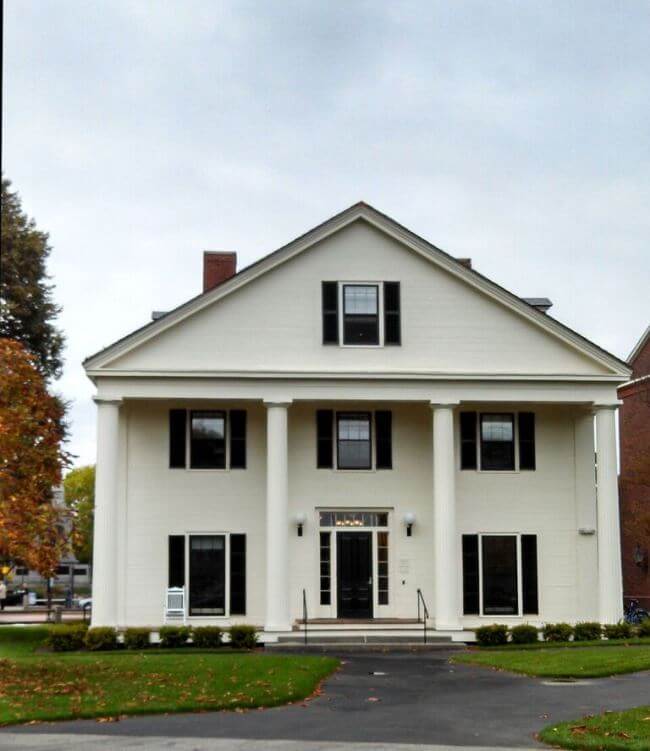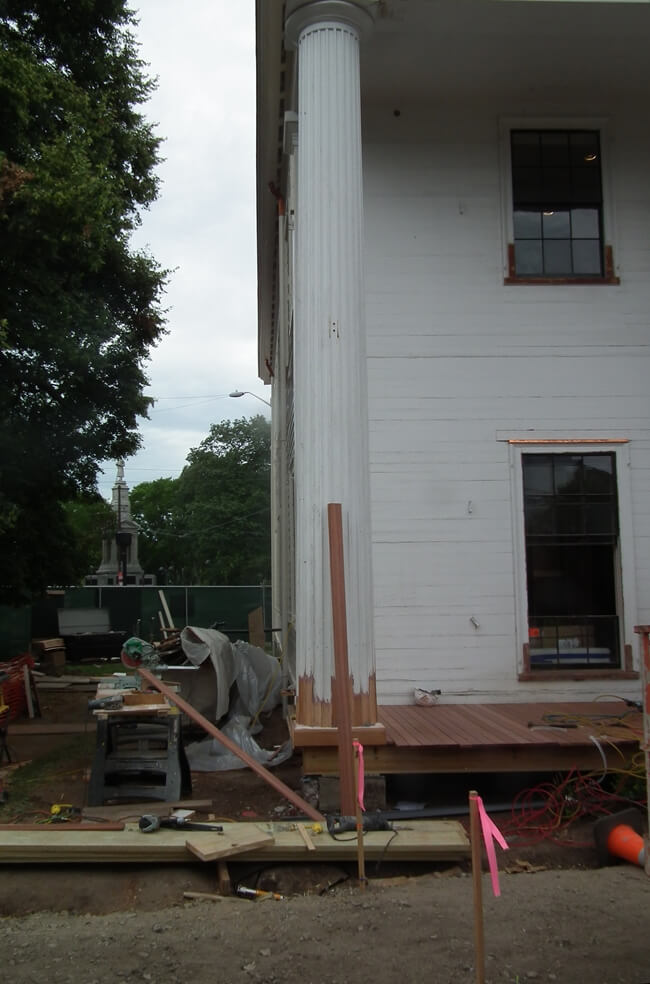Gannett House, Harvard Law
Location: Cambridge, Massachusetts
Noteworthy: Completion of a detailed window condition survey, which allowed extensive deterioration to be corrected and ensured the windows would be operable for another century of use
Awards: LEED Gold Certification
M&A’s Scope: Historic wood window restoration, column and portico restoration, door restoration and installations
Owner: Harvard University
Architect: Austin Architects, LLC
General Contractor: Lake Contracting, Inc.
Gannett House is the oldest surviving building on the Harvard Law School campus and home to the Harvard Law Review, a distinction it’s held since the 1920s. . Built in 1838 as a private residence, the Greek Revival structure was designed by architect Samuel William Pomeroy. Harvard Law bought the house in 1897, and it’s served a number of functions since that time, including student housing and a Naval Sonar Laboratory. The building, which originally faced south, was rotated 90 degrees to face east in 1938 in anticipation of a proposed mall, which was never built. The building underwent renovations in 1925 and 1980 before undergoing its most recent renovation.
The interior of Gannett House was gutted and redesigned beginning in 2012. Completed in just over nine months, upgrades included an elevator, HVAC and electrical upgrades, and office space upgrades, as well as a new roof and windows. M&A performed window, door, exterior siding, and column restoration to the historic structure.
On the east, the portico columns required attention. The column shafts themselves were in good condition, but the rectangular column bases and plinth blocks were demolished and replaced with new mahogany components that exactly matched the originals. After removing the existing base and plinth, M&A noted damaged to the bottom of one of the fluted column shafts, which sat directly on the rectangular base. Dutchman and epoxy consolidation was performed by M&A’s preservation carpenters to ensure the longevity of both the column shaft and the new base. The grooves of the fluting were meticulously lined up between the existing historic column and the inserted wood Dutchman, and once painted, the differentiation between the new and old were indistinguishable.
All windows were restored, which included removal of sash, re-glazing, and repairs to the wood frames. Jambs and sills were restored on-site. To properly document the work, M&A methodically documented existing conditions at each window opening. This involved completing a conditions survey, addressing any issues at interior stops, weatherstripping, hardware, glass, weight pockets, and observable sash conditions both during removal and after the paint was stripped, revealing covered issues. Previous repairs became exposed, which included the use of metal brackets to hold stiles and rails together where the tenon joints failed. Many of the sash were in extremely poor condition, with wood decayed to the point of exposing mortise and tenon joints. M&A’s preservation carpenters replaced stiles and rails that were beyond repair, and performed epoxy consolidation repairs at locations where they were able, saving as much historic fabric as possible. On site, the window jambs and sills were consolidated with wood epoxy, new parting beads and interior stops were fabricated, and the restored windows were installed with new sash cords to ensure ease of operability.
As the restored sash were being reinstalled, M&A’s preservation carpenters noted that some of the sash sat loose within the jamb opening. The existing sash were narrower than the jamb opening, which is atypical. As historically sensitive storm windows were installed, the issue of air penetration was less of an issue than that of operability. To remedy this problem, M&A recommended the use of two sash lifts at each operable sash, which encourages the user to exert equal pressure on both sides of the sash at the same time, and to lift from the bottom of the sash. This solution ensured the longevity of the sash by preventing wear and tear on the meeting rails and muntins, which were being used to open the lower sash.
The project was completed in August of 2013 and received LEED Gold Certification, proving that historic buildings, and their original windows, can be green buildings as well.
















